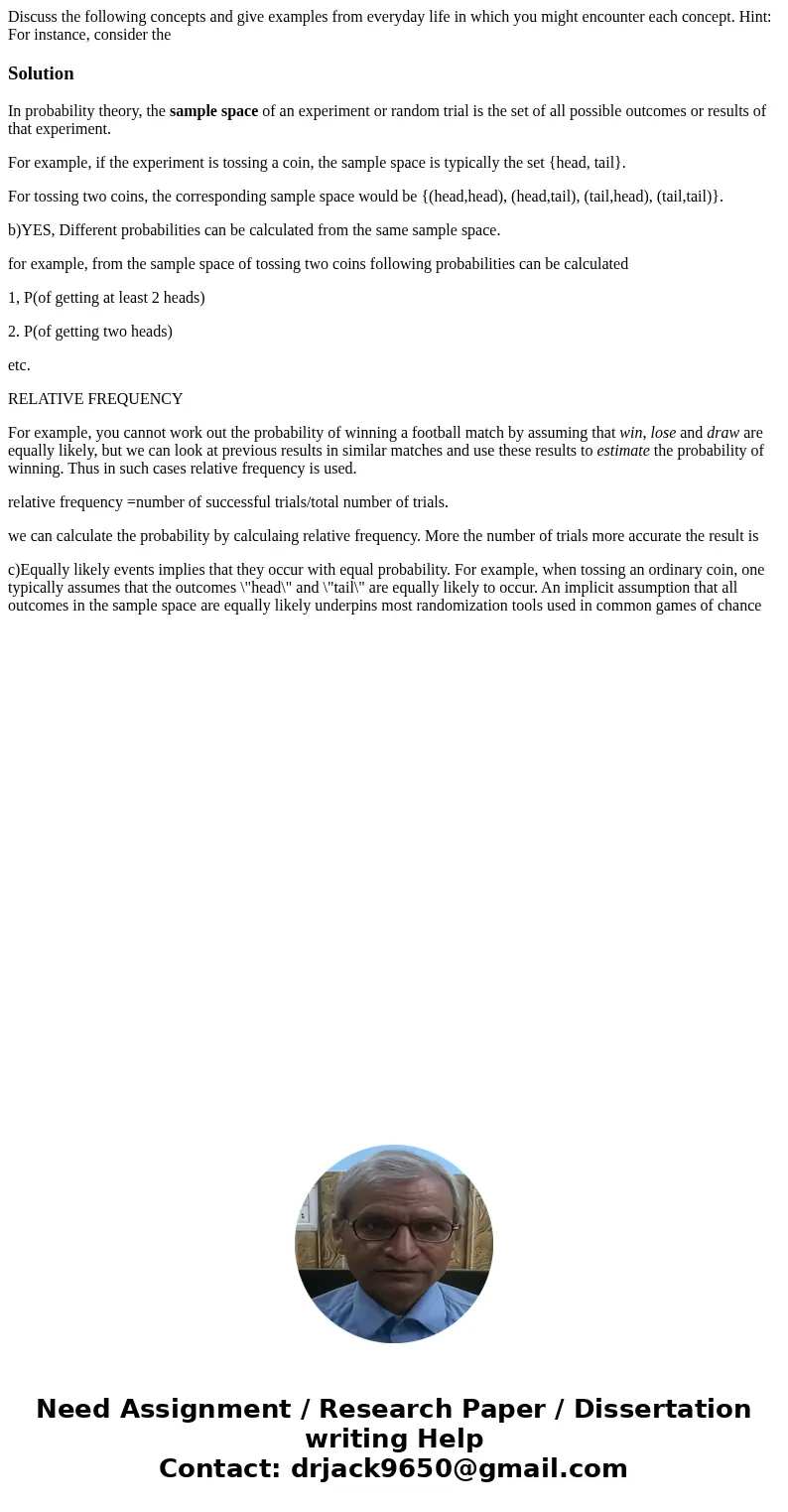Discuss the following concepts and give examples from everyd
Discuss the following concepts and give examples from everyday life in which you might encounter each concept. Hint: For instance, consider the
Solution
In probability theory, the sample space of an experiment or random trial is the set of all possible outcomes or results of that experiment.
For example, if the experiment is tossing a coin, the sample space is typically the set {head, tail}.
For tossing two coins, the corresponding sample space would be {(head,head), (head,tail), (tail,head), (tail,tail)}.
b)YES, Different probabilities can be calculated from the same sample space.
for example, from the sample space of tossing two coins following probabilities can be calculated
1, P(of getting at least 2 heads)
2. P(of getting two heads)
etc.
RELATIVE FREQUENCY
For example, you cannot work out the probability of winning a football match by assuming that win, lose and draw are equally likely, but we can look at previous results in similar matches and use these results to estimate the probability of winning. Thus in such cases relative frequency is used.
relative frequency =number of successful trials/total number of trials.
we can calculate the probability by calculaing relative frequency. More the number of trials more accurate the result is
c)Equally likely events implies that they occur with equal probability. For example, when tossing an ordinary coin, one typically assumes that the outcomes \"head\" and \"tail\" are equally likely to occur. An implicit assumption that all outcomes in the sample space are equally likely underpins most randomization tools used in common games of chance

 Homework Sourse
Homework Sourse